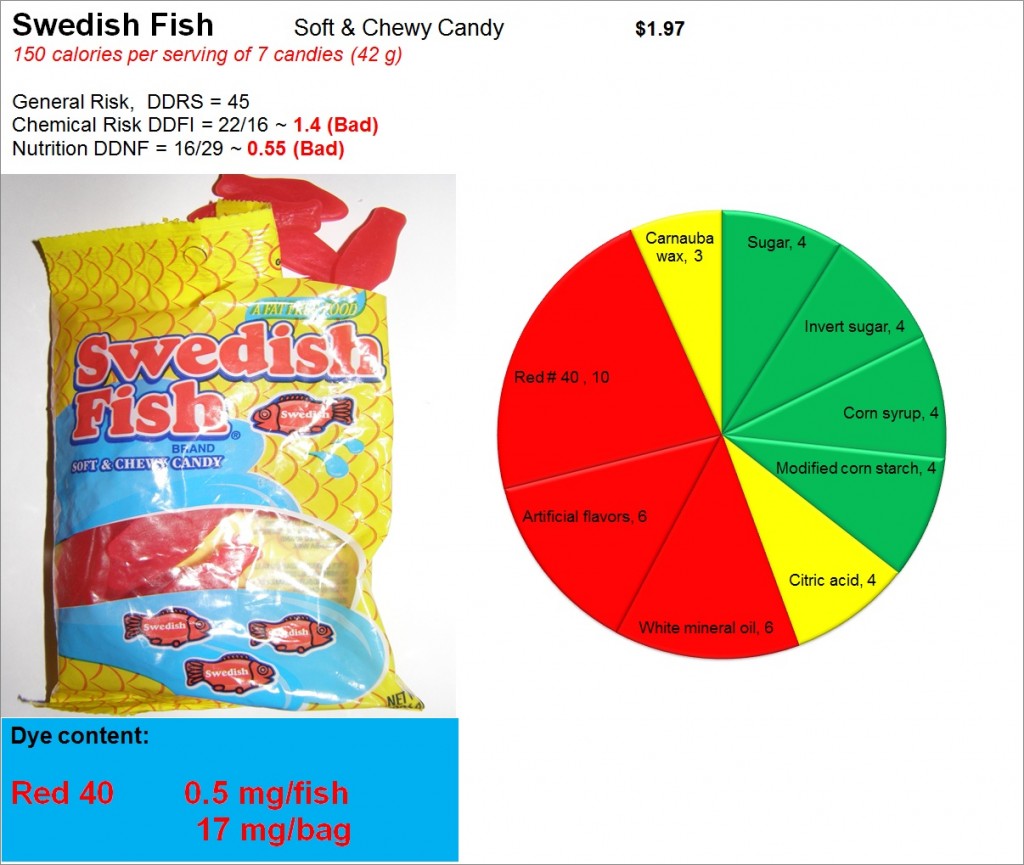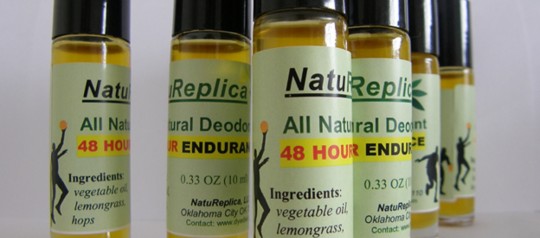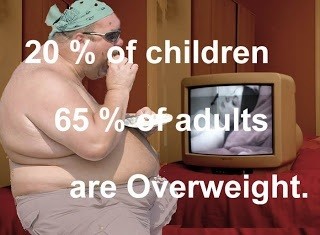Swedish Fish: What do you chew?
Swedish Fish is a soft & chewy fish-shaped candy made in Canada. The fish is originated from in Sweden where it is generally much paler in color and more translucent. The taste also differs slightly, the Swedish version being less sweet but more fruit-flavored, especially the yellow one. Why, why so many American versions of foods are less healthy than their European counterparts? What is it, American preference, negligence or ignorance? Explain this to me if you know the answer.
DyeDiet Doesn’t Buy It!
 Swedish Fish: Risk, Nutrition and Dye Content
Swedish Fish: Risk, Nutrition and Dye Content
You read on the top of the label: A Fat Free Food. Well, if sugars, starch (green segments in the DyeDiet risk diagram) and azo dye (one of the red segments) are knowingly contain no fat, what the achievement is to mix them all and market as “a fat free food”? Don’t forget table salt, it is the fat free food too!
What else comes with the chewing fishes? Oh, some diesel fuel (another red segment)! Yes, yes, just a bit heavier one; read the paragraph from the Wikipedia carefully:
- Mineral oil is a mixture of alkanes (hydrocarbons) in the C15 to C40 range from a non-vegetable (mineral) source, particularly a distillate of petroleum. According to a UK news story dated March 2011, mineral oils used in ink can get into foods when they are packed in recycled cardboard. Because of the danger of cancer, manufacturers are to stop using recycled cardboard in packaging. The application of four popular moisturizers increased the incidence of skin cancer wee in mice that were irradiated twice a week for 20 weeks. It is occasionally used in the food industry, particularly for candy. In this application, it is typically used for the glossy effect it produces, and to prevent the candy pieces from adhering to each other. It has been discouraged for use in children’s foods, though it is still found in many candies, including Swedish Fish. In the USA mineral oil presently is NOT generally recognized as safe (GRAS) for humans but it is FDA approved for cosmetic applications and as a food additive too. Search the GRAS Database.
- Carnauba wax (yellow segment – relatively safe additive) can produce a glossy finish and as such is used in automobile waxes, shoe polishes, dental floss, food products such as sweets, instrument polishes, and floor and furniture waxes and polishes, especially when mixed with beeswax and with turpentine. It consists mostly of aliphatic esters (40 wt%), di-esters of 4-hydroxycinnamic acid (21.0 wt%),
No wonder, bad chemical risk of DDFI = 22/16 ~ 1.4 and bad nutrition of DDNF = 16/29 ~ 0.55 is what you chew out of Swedish Fish.
While the content of Red 40 in the candy is relatively low (0.5 mg per fish), keep in mind that the health risks come from the chronic exposure to the artificial colorants hiding where you least expected: red velvet cakes, braids and turnovers, pickles and even dried fruit mixtures. Read the CSPI PDF document Diet, ADHD and Behavior. Here is a database of the Risk Factors of 250 most popular food additives in America: Risk Factors of Food Additives.
Bottom line. No joke, a tablespoon of plain sugar is healthier than serving of these Swedish Fishes. You may consider a spoon of honey or molasses too. But the decision is up to you, of course. I do hope this quick report will help you to make your informed healthy choice for you and your children!
Category: Candy, Food Dyes Exposure






